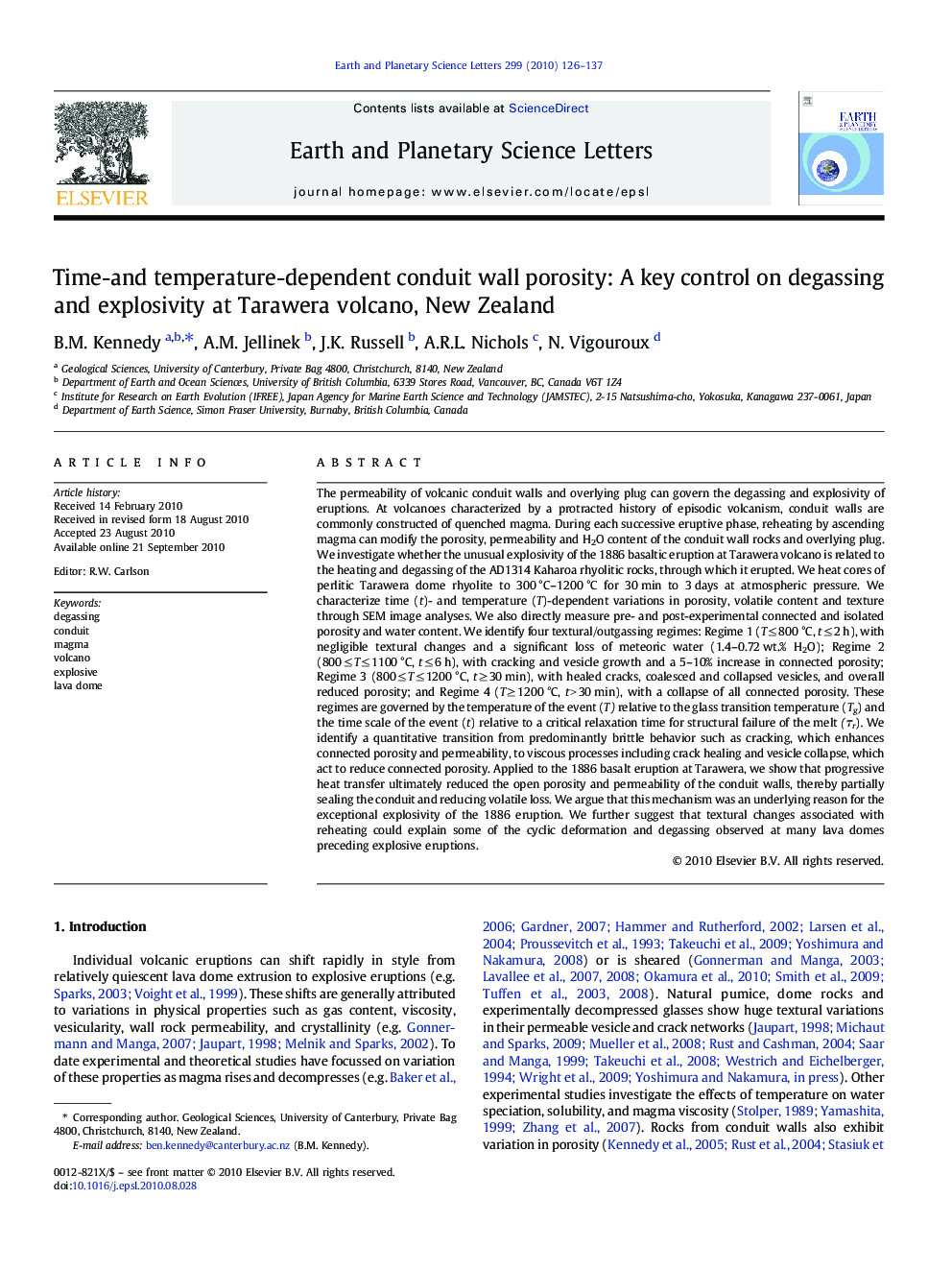| کد مقاله | کد نشریه | سال انتشار | مقاله انگلیسی | نسخه تمام متن |
|---|---|---|---|---|
| 4678281 | 1634842 | 2010 | 12 صفحه PDF | دانلود رایگان |
عنوان انگلیسی مقاله ISI
Time-and temperature-dependent conduit wall porosity: A key control on degassing and explosivity at Tarawera volcano, New Zealand
دانلود مقاله + سفارش ترجمه
دانلود مقاله ISI انگلیسی
رایگان برای ایرانیان
کلمات کلیدی
موضوعات مرتبط
مهندسی و علوم پایه
علوم زمین و سیارات
علوم زمین و سیاره ای (عمومی)
پیش نمایش صفحه اول مقاله

چکیده انگلیسی
The permeability of volcanic conduit walls and overlying plug can govern the degassing and explosivity of eruptions. At volcanoes characterized by a protracted history of episodic volcanism, conduit walls are commonly constructed of quenched magma. During each successive eruptive phase, reheating by ascending magma can modify the porosity, permeability and H2O content of the conduit wall rocks and overlying plug. We investigate whether the unusual explosivity of the 1886 basaltic eruption at Tarawera volcano is related to the heating and degassing of the AD1314 Kaharoa rhyolitic rocks, through which it erupted. We heat cores of perlitic Tarawera dome rhyolite to 300 °C-1200 °C for 30 min to 3 days at atmospheric pressure. We characterize time (t)- and temperature (T)-dependent variations in porosity, volatile content and texture through SEM image analyses. We also directly measure pre- and post-experimental connected and isolated porosity and water content. We identify four textural/outgassing regimes: Regime 1 (T â¤Â 800 °C, t â¤Â 2 h), with negligible textural changes and a significant loss of meteoric water (1.4-0.72 wt.% H2O); Regime 2 (800 â¤Â T â¤Â 1100 °C, t â¤Â 6 h), with cracking and vesicle growth and a 5-10% increase in connected porosity; Regime 3 (800 â¤Â T â¤Â 1200 °C, t â¥Â 30 min), with healed cracks, coalesced and collapsed vesicles, and overall reduced porosity; and Regime 4 (T â¥Â 1200 °C, t > 30 min), with a collapse of all connected porosity. These regimes are governed by the temperature of the event (T) relative to the glass transition temperature (Tg) and the time scale of the event (t) relative to a critical relaxation time for structural failure of the melt (Ïr). We identify a quantitative transition from predominantly brittle behavior such as cracking, which enhances connected porosity and permeability, to viscous processes including crack healing and vesicle collapse, which act to reduce connected porosity. Applied to the 1886 basalt eruption at Tarawera, we show that progressive heat transfer ultimately reduced the open porosity and permeability of the conduit walls, thereby partially sealing the conduit and reducing volatile loss. We argue that this mechanism was an underlying reason for the exceptional explosivity of the 1886 eruption. We further suggest that textural changes associated with reheating could explain some of the cyclic deformation and degassing observed at many lava domes preceding explosive eruptions.
ناشر
Database: Elsevier - ScienceDirect (ساینس دایرکت)
Journal: Earth and Planetary Science Letters - Volume 299, Issues 1â2, 15 October 2010, Pages 126-137
Journal: Earth and Planetary Science Letters - Volume 299, Issues 1â2, 15 October 2010, Pages 126-137
نویسندگان
B.M. Kennedy, A.M. Jellinek, J.K. Russell, A.R.L. Nichols, N. Vigouroux,